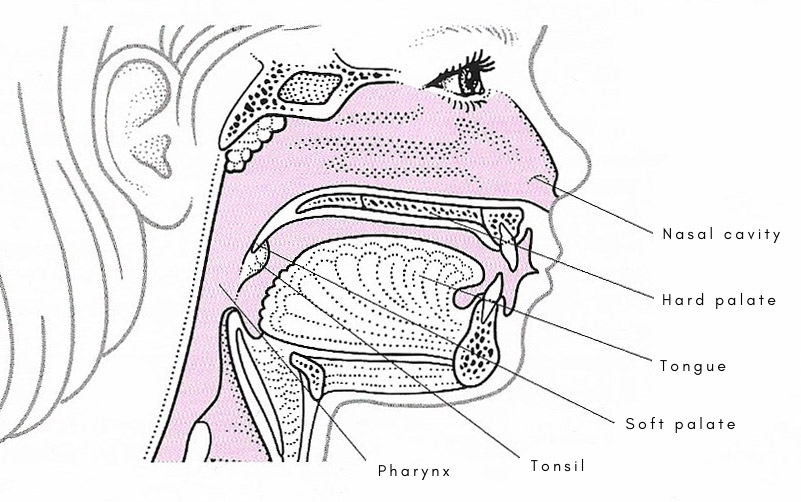palate

The functions of the palate are to separate the mouth from the nasal cavity and to form the floor of the nasal cavity and the roof of the mouth, providing a surface against which the tongue can push during chewing and swallowing.
The palate is a structure that divides the mouth from the nasal cavity. It consists of two parts: (1) the hard palate in front and (2) the soft palate behind.
The hard palate is formed by processes of the maxillae and palatine bones and is covered by a mucous membrane. Further back, the soft palate is a mobile connective tissue structure which can close off the nasopharynx during swallowing and speech. At the back of the mouth, the soft palate tapers to form a fleshy hanging flap of tissue called the uvula.
Cleft palate
Cleft palate is a common developmental deformity of the palate in which the two halves do not meet in the midline; it is often associated with harelip. It can be familial or follow disease in early pregnancy, but may appear spontaneously. It causes a characteristic nasal quality in the cry and voice. Plastic surgery can close the defect and allow more normal development of the voice and teeth.


